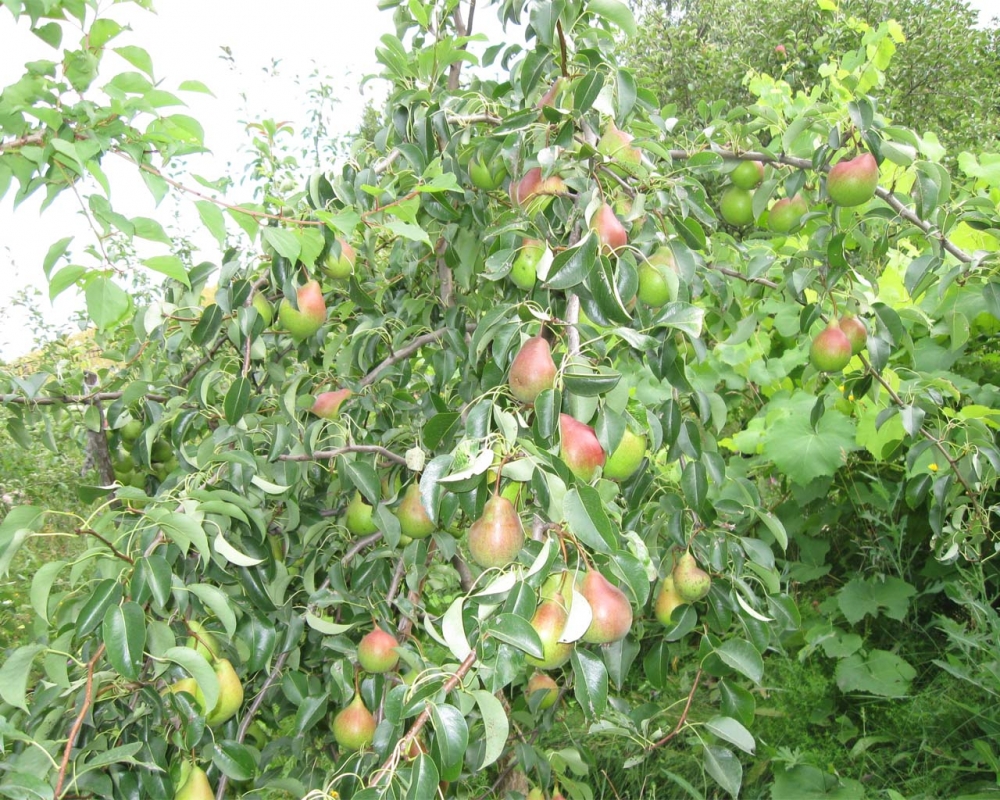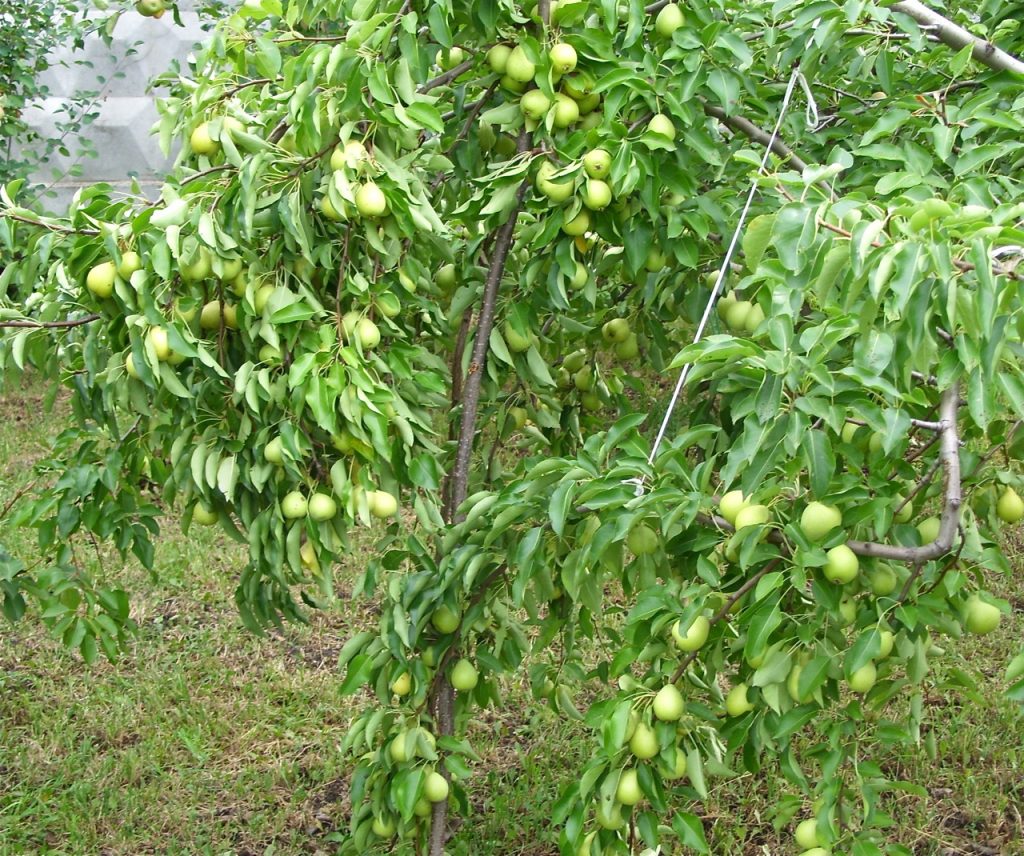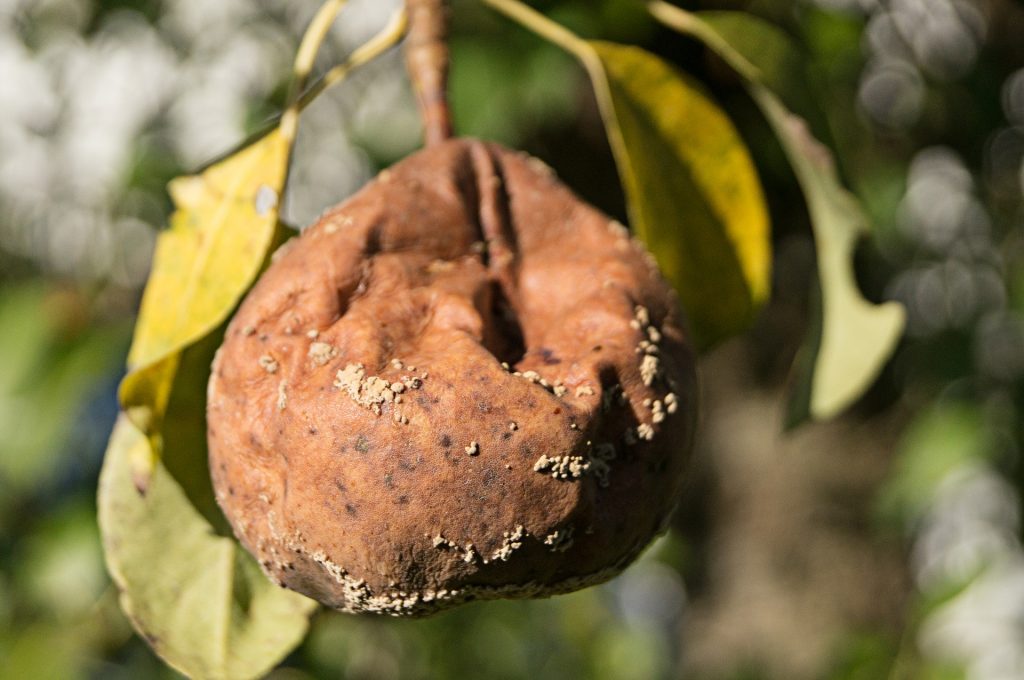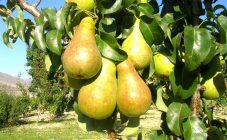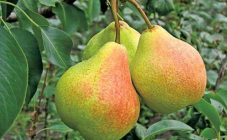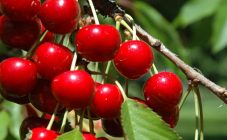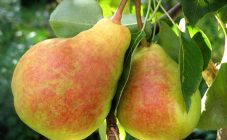Content:
The ultra-early variety of Skorospelka pears was obtained at VNIIGiSPR named after V.I. I. V. Michurin. The authors were breeders S.P. Yakovlev and A.P. Gribanovsky. The material for obtaining new seedlings was Citron de Carme, as well as a hybrid obtained by crossing Bere Ligel and the Ussuri wild. The unique combination of genes eventually gave a tree with high rates of survival, productivity and early maturity. The variety is zoned for the Central and Middle Volga regions, as well as the Central Chernozem region, but due to frost resistance it is planted further north, for example, in the Sverdlovsk region.
Pear Skorospelka from Michurinsk: variety description
The tree is medium-sized and bears fruit for 5 years after planting, reaching maximum values in the 10th year. Gives an increase of up to 0.5 m in height annually. Resistant to frost (withstands up to -40 ° C) and scab damage. The compact crown of the pear has a pyramidal or slightly more rounded shape. Branches branch off from the trunk at an acute angle. The medium-sized leaf is ovoid. Flowering occurs mainly in the first decade of May. The early-maturing variety needs cross-pollination (the bee is the best pollinator, but other insects will do).
The fruits of a pear are regular in shape, grow medium-small in weight about 70-80 g. During the ripening period, they acquire a greenish-yellow color, sometimes with a slight pinkish blush. Pear pulp is sweet, with a pleasant aroma, without astringency. Pears are consumed fresh or processed.
The harvest of Skorospelka from Michurinsk is poorly stored. If pears are harvested slightly greenish in the 20th of July, they can ripen at a temperature of + 4 ° C for 2 weeks. The harvested crop must be consumed within 14 days, or processed into canned food.
Planting and caring for the Skorospelka pear
Like other varieties, Michurinskaya pear prefers sunny and dry grounds. Wetlands are not suitable for her. The optimum depth of groundwater is 2.5 m and more. Shade is very harmful to young trees, therefore it is not recommended to plant them near buildings. Planting is best done in autumn, in the first decade of September, or in spring after thawing of the soil.
A planting pit for a pear is dug 1 m deep and 0.8-1 m in diameter. You need to dig it a couple of weeks before planting. At the same time, where the soils are sandy loam, it is necessary to lay a 20 cm layer of clay on the bottom of the pit. Then, 1/3 of the depth, loose fertile soil mixed with fertilizers is poured.
The optimal composition is as follows:
- Sod land taken out of the planting pit.
- 3 buckets of rotted manure or humus.
- 100 g of potash fertilizers.
- 150 g superphosphate.
A peg is driven in the center of the pit, to which a seedling of an early-ripening pear will be tied. Its optimum height is 140 cm. The seedling is tied to the north side of the support and its roots are carefully straightened. The powder is carried out in layers, pouring abundant water over the soil. After the completion of the work, the root collar should be 3-5 cm above the soil level.
In order to avoid too rapid drying out of the earth in the near-trunk circle, the earth on the surface is sprinkled with mulch. If in the area of planting it rains at least once a week, then artificial irrigation can be dispensed with.If the area is arid, then watering is carried out at least 2 times a month at the rate of 40-50 liters for each seedling.
In the fall, when the foliage has fallen off, but frosts have not yet come, the trunks of pear trees are carefully prepared for winter. Fallen leaves, grass and old mulch are collected and burned. This will eliminate most of the pests. Dig the earth under the tree to a shallow depth (about 12 cm). A little further - to a depth of 25 cm.
In subsequent years, it is necessary to feed the Michurinskaya beauty pear, relying on soil fertility, as well as growth indicators. In the spring, under the trunks before the buds bloom, urea is applied at the rate of 25 g per 1 m², as well as ammonium nitrate (30 g / m²). Re-introduction of mineral or organic fertilizers (mullein solution) is carried out during the ripening of the ovary.
In the fall, when the pear tree is preparing to shed its foliage, it needs late feeding, which will allow it to overwinter and actively enter the growth phase in spring. 10 liters of a solution of 1 tablespoon of potassium chloride and 2 tablespoons of superphosphate are added under each tree.
Early ripening is prone to self-thickening. Therefore, she needs annual pruning. This will allow you to regulate the number of ovaries on the pear and prevent them from becoming smaller. In the fall, they carry out sanitary pruning, removing diseased and broken branches, and in the spring they must steal last year's shoots, giving the crown the direction of growth. This allows you to control the height of the pear tree, forming the strongest branches at human height. Branches that grow inside the crown or down are sure to be cut.
Diseases and pests
Although Skorospelka's pear scab is not scary, it is often affected by moniliosis, a dangerous fungal disease. It appears where a carrion is not removed from under the trees in time. Spores from rotted pears are carried by wind and insects to the leaves.
You can see the disease with the naked eye. Brown spots appear on green pear fruits, gradually completely covering the pears. If you do not take action in time, then the pear harvest can be completely lost. As a preventive measure, it is necessary to remove all the carrion from under the trees, and also to spray the crown with a urea solution during the period of swelling of the kidneys.
When preparing pears for wintering, it is necessary not only to thoroughly clean the near-trunk circles from all plant residues and dig up the soil, but also to clean the trunks from the old bark and whitewash them. This will kill most of the scale insects, ticks and other insect pests. A fungicidal additive is necessarily introduced into the whitewash in order to protect the tree not only from insects, but also from the fungus.
Advantages and disadvantages
In favor of planting Skorospelki trees on the site, such characteristics as:
- early ripening of pears (from July 20);
- high productivity;
- winter hardiness;
- scab resistance;
- high taste of fruits.
Among the shortcomings of the Skorospelka pear, the short shelf life of the fruits is noted (up to 2 weeks). For the rest, the tree is able to please the owner with a stable and growing harvest year after year. In terms of its taste, Skorospelka has in many ways become the standard of a "real" pear, since after the final ripening it is very sweet and juicy. Novice gardeners should definitely pay attention to this variety.
